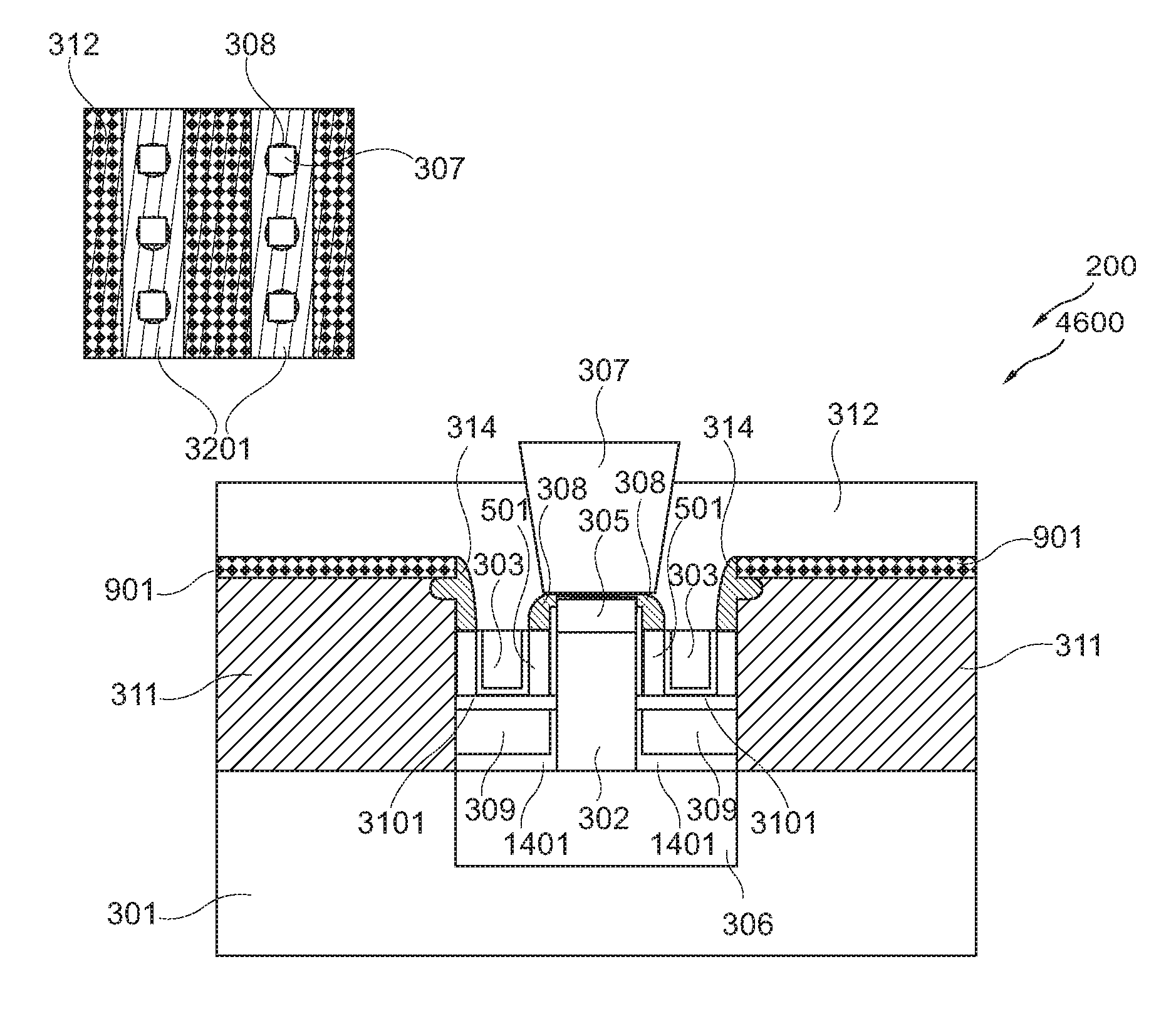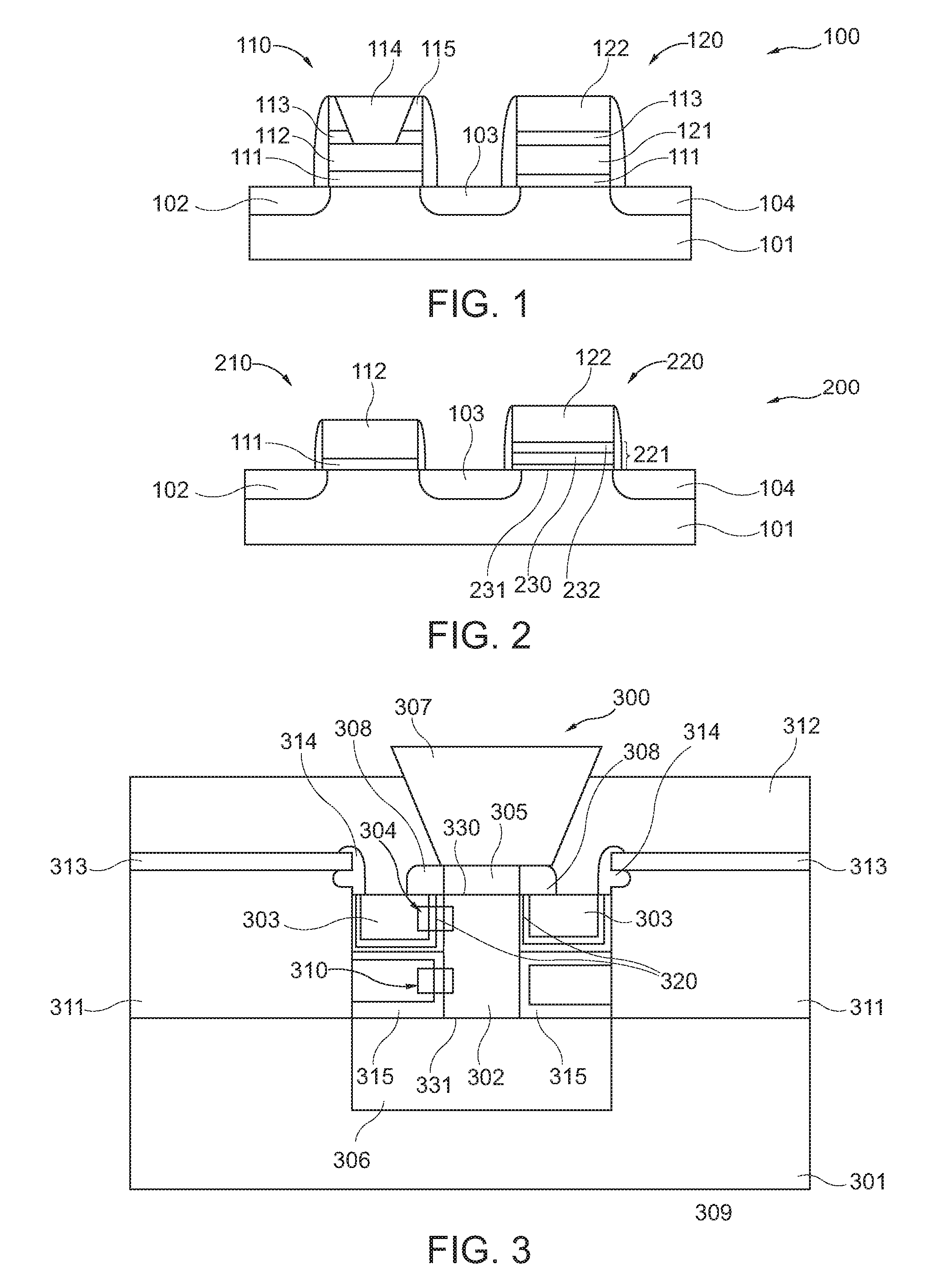Nonvolatile memory cell comprising a nanowire and manufacturing method thereof
a memory cell and nanowire technology, applied in the field of memory cells, can solve the problems of low coupling ratio, high operating voltage, and inability to properly scale standard planar flash memory beyond 50 nm, and achieve the effects of reducing the number of word lines, and avoiding or suppressing artefacts
- Summary
- Abstract
- Description
- Claims
- Application Information
AI Technical Summary
Benefits of technology
Problems solved by technology
Method used
Image
Examples
Embodiment Construction
[0078]The illustration in the drawing is schematical. In different drawings, similar or identical elements are provided with the same reference signs.
[0079]In the following, referring to FIG. 3, a memory cell 300 according to an exemplary embodiment of the invention will be explained.
[0080]The memory cell 300 comprises a substrate 301 that is an n-type silicon wafer. An oblong nanowire 302 extends along a vertical trench formed in the substrate 301. Furthermore, a control gate 303 is provided which surrounds the nanowire 302 in a coaxial manner along a portion of the vertical extension of the nanowire 302. A charge storage structure 304 is formed as an ONO layer sequence and is arranged between the control gate 303 and the nanowire 302. Actually, the charge will be stored in the nitride layer of the ONO layer sequence 304.
[0081]The memory cell 300 further comprises a first source / drain region 305 (which may particularly act as a drain) and is formed by an n+-doped silicon material. ...
PUM
 Login to View More
Login to View More Abstract
Description
Claims
Application Information
 Login to View More
Login to View More - R&D
- Intellectual Property
- Life Sciences
- Materials
- Tech Scout
- Unparalleled Data Quality
- Higher Quality Content
- 60% Fewer Hallucinations
Browse by: Latest US Patents, China's latest patents, Technical Efficacy Thesaurus, Application Domain, Technology Topic, Popular Technical Reports.
© 2025 PatSnap. All rights reserved.Legal|Privacy policy|Modern Slavery Act Transparency Statement|Sitemap|About US| Contact US: help@patsnap.com



